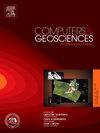基于深度学习的后处理分割增强降雨预测的不确定性感知方法
IF 4.4
2区 地球科学
Q1 COMPUTER SCIENCE, INTERDISCIPLINARY APPLICATIONS
引用次数: 0
摘要
降水预报在洪水管理、农业规划、水资源分配和天气预警中至关重要。尽管数值天气预报(NWP)模式取得了重大进展,但这些系统经常表现出严重的偏差和错误,特别是在高空间和时间分辨率下。为了解决这些限制,我们开发并评估了不确定性感知深度学习集成架构,重点是在实现高精度和锐度与可靠性之间的最佳平衡的同时表征预测不确定性。本研究提出了SDE U-Net,这是一种专门为降水预报中的分割任务而设计的SDE- net的新改编。我们对包括SDE U-Net在内的最先进的集合体系结构进行了全面评估,并将其预测不确定性与穷人集合(PME,即NWPs预测平均值)在不同气象条件下(从非强烈降水模式到强烈天气事件)的预测不确定性进行了比较。作为一个例子,我们专注于预测意大利西北部的日累积降水量,尽管我们的方法是广泛推广的。我们的研究结果表明,就非强烈和强烈降水事件的中位数RMSE而言,所有评估的概率深度学习模型都优于PME基准。其中,SDE U-Net实现了最佳的综合性能,对强烈事件提供了最低的RMSE (2.637×10−2),并且与其他模型相比显示出更稳定的误差分布。对于非激烈事件,SDE U-Net的表现与其他深度学习模型相当,仍然明显超过基线。此外,SDE U-Net有效地平衡了清晰度和可靠性,使其特别适合极端天气的业务预报。将像SDE U-Net这样的不确定性感知模型集成到预报工作流程中,可以加强对天气相关灾害的决策和准备。本文章由计算机程序翻译,如有差异,请以英文原文为准。
Uncertainty-aware methods for enhancing rainfall prediction with deep-learning based post-processing segmentation
Precipitation forecast is critical in flood management, agricultural planning, water resource allocation, and weather warnings. Despite significant advancements in Numerical Weather Prediction (NWP) models, these systems often exhibit substantial biases and errors, particularly at high spatial and temporal resolutions. To address these limitations, we develop and evaluate uncertainty-aware deep learning ensemble architectures, focusing on characterizing forecast uncertainties while achieving high accuracy and an optimal balance between sharpness and reliability. This study presents SDE U-Net, a novel adaptation of SDE-Net designed specifically for segmentation tasks in precipitation forecasting. We conduct a comprehensive evaluation of state-of-the-art ensemble architectures, including SDE U-Net, and compare their forecast uncertainty against that of a Poor Man’s Ensemble (PME, i.e. NWPs forecast average) across diverse meteorological conditions, ranging from non-intense precipitation patterns to intense weather events. As an example case, we focus on predicting daily cumulative precipitation in northwest Italy, though our approach is broadly generalizable. Our findings demonstrate that all the evaluated probabilistic deep learning models outperform the PME benchmark in terms of median RMSE for both non-intense and intense precipitation events. Among them, SDE U-Net achieves the best overall performance, delivering the lowest RMSE for intense events () and demonstrating a more stable error distribution compared to other models. For non-intense events, SDE U-Net perform comparably to other deep learning models, still notably surpassing the baselines. Moreover, SDE U-Net effectively balances sharpness and reliability, making it particularly suitable for operational forecasting of extreme weather. Integrating uncertainty-aware models like SDE U-Net into forecasting workflows can enhance decision-making and preparedness for weather-related hazards.
求助全文
通过发布文献求助,成功后即可免费获取论文全文。
去求助
来源期刊

Computers & Geosciences
地学-地球科学综合
CiteScore
9.30
自引率
6.80%
发文量
164
审稿时长
3.4 months
期刊介绍:
Computers & Geosciences publishes high impact, original research at the interface between Computer Sciences and Geosciences. Publications should apply modern computer science paradigms, whether computational or informatics-based, to address problems in the geosciences.
 求助内容:
求助内容: 应助结果提醒方式:
应助结果提醒方式:


